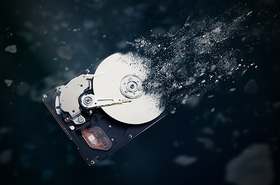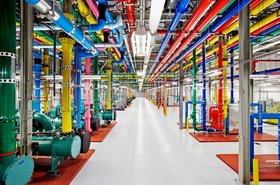The European data center sector has made advances towards more circularity with initiatives like the Climate Neutral Data Centre Pact. Hyperscale data centers are also publicizing models for successful circular economy practice. Manufacturers have been running remanufacturing departments for a number of years: Cisco has “Cisco Refresh,” Dell has “Dell Refurbished,” HP has “HP Renew.”
Why is this? Because it makes fundamental business sense across the three metrics of people, planet, and profit. In May 2022, we published an academic paper at the LCM conference to demonstrate this. Below is a truncated version.
The social benefits
CPUs, memory, and other components for servers are made by a limited number of specialist suppliers in China, the materials themselves are mined in diverse areas of the developing world. The supply chain is complex, with numerous vendors fulfilling bulk component orders in fluctuating numbers. Tracking social impact is problematic here, but we do know that there is a risk to human health and safety as well as risks associated with conflict minerals.
In contrast, the refurbishment process is clean, safe, and requires a high level of knowledge and skill. It is also a growing high-value job proposition in the EU. According to a 2019 Deloitte report, ICT aftermarkets were worth at least $46 billion in Europe and employed more than 220,000 people in 2015.
The environmental benefits
Product life extension contributes by reducing GHG emissions associated with mining, transport, manufacturing, and destruction at end-of-life. It also impacts on other important issues such as material shortages and the destruction of the natural ecosystem.
Of the 30 “Critical Raw Materials” (CRM) identified by the EU as a combination of “raw materials of high importance to the EU economy and of high risk associated with their supply,” 23 exist in data center IT hardware. Stores of these materials are extremely stressed; some are predicted to run out within decades unless alternative sources are found. The seabed has been suggested as one such alternative, but this comes with significant implications for subsea biodiversity.
In 2015 Joint Research Council informed policymakers that current recycling technologies are unable to recover 100 percent of the materials within the servers and that CRMs are amongst the most difficult to retrieve. Although new techniques are in development such as bioleaching and pyrolysis, these are in their nascent stages. The best case for recovering all materials is to reuse the equipment rather than meltdown and start again.
The economic benefits
The costs of refurbished and remanufactured servers are considerably lower than their brand-new counterparts. While basic configurations can be closer in price, any configured variants will be considerably more expensive.
Based on our industry experience, the cost of new equipment for servers is often as high as 50-80 percent more than the refurbished condition even after only three years. When a generation moves to end-of-life, or a newer generation comes out, the remaining OEM stock will be sold at reduced prices but still for more than refurbished equivalents.
Prior to 2015, each successive generation of server was more energy efficient, so cost savings on energy bills were significant. As this is no longer the case, the operational cost benefit of new versus refurbished has decreased. It now makes financial sense to consider refurbished and remanufactured machines as part of an upgrade process, especially in use cases that do not push the CPU to maximum capacity.
The business case for brand new mainly applies to cases where top-end performance is required but refurbished options are unavailable. This is relatively rare.
Given the evidence above, it seems sensible both environmentally and economically for this approach to change, and for data centers to examine their buying choices more closely and consider extending the life of their current assets.








